It has taken nearly 250 years for the first full length translation of Mir’s putative autobiography, Zikr-e Mir to appear in Urdu. The section that has been consistently elided is the one relating to “jokes and witty anecdotes”, which Mir, arguably the greatest Urdu poet ever, appended at the end of his autobiography for the “entertainment and edification of friends”. Consider here, two of them:
An atheist called Abdur Rahman used to sit in the courtyard of the building that contains the footprint of the Prophet, peace be upon him [extant as Dargah Rasoolnuma at Panchkuian road in Central Delhi near Connaught Place, built in the 14th century]. Once Shah Gulshan, whose saintliness was not without perfection, was coming out after having obtained the blessed sight of the relic. The atheist called out his name to gain his attention but the Shah ignored him. The atheist said, “Gulshan I had believed you were a man, but you turned out to be an ass.” The Shah replied, “and how sad it would be if all your beliefs turned out that way.”
And here is another:
Mulla Ahmed Said Ashraf was the tutor of Zeb un Nisa Begum, the daughter of the Emperor Aurangzeb Alamgir. The Begum sent a maid to serve him. Then one day she asked, “Mulla, how is the maid?” He said, “Why ask, she is wonderful, but she doesn’t know Gharbila.” “What is Gharbila?” the Begum asked. He exclaimed, “How sad, the Begum does not know either.” Gharbila means the coquetry and ways women engage in during sexual intercourse.
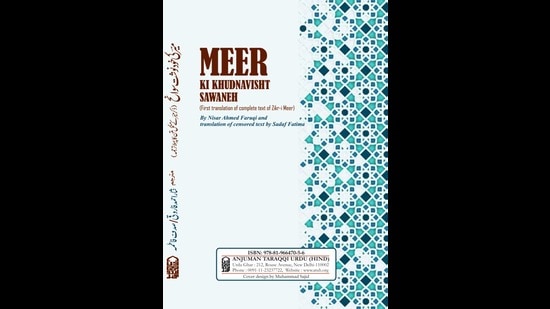
Zikr-e Mir (Urdu) (the first full Urdu translation of Mir’s autobiography); Sadaf Fatima, adapted from Nisar Ahmed Faruqi’s version; 228pp, ₹400; Anjuman Taraqqi Urdu, Delhi
Most of the jokes are extremely risqué, even prurient and obscene, for the innocent modern reader, regardless of their linguistic provenance. Mir’s unabashed inclusion of them in a work meant for public circulation tells us much about his times, just as their elision in the subsequent two centuries is an equally important reminder of the narrow-mindedness of modernity. The jokes cited above inform us, inter alia, that, in pre-modern Hindustan, a person could publicly declare himself an atheist and yet be a member of society, that he wasn’t necessarily stoned or outcast; that the daughter of a supposedly fanatical ruler, a renowned poet whose political influence caused her to be imprisoned by Aurangzeb, could have independent interactions with a mullah. Further, the mullah could engage in double entendre with a princess, no less, without impugning his piety or his stature! The autobiography is otherwise full of anecdotes relating to Sufism, and to political events and wars of Mir’s times, in some of which he was a direct participant. Overall, as CM Naim has pointed out, Mir was a complete eighteenth century personage, who would make a perfect companion to any noble or king. A learned man, he could compose poetry and relate spiritual instruction, render political and diplomatic service, and entertain, all at the same time.
The jokes were considered to be too obscene to be included in the several translations in Urdu of Mir’s autobiography, mostly published after 1857, when a new puritanism came to dominate Urdu letters, and which the late great Shamsur Rahman Faruqi, among others, outlined and contested for many decades. It is fitting that the Anjuman Taraqqi Urdu, led by Ather Farouqui, himself a prolific translator, should have seen fit to render them in Urdu since the first bowdlerised translation was also published by it nearly a hundred years ago. The Anjuman has taken the lead in observing the tricentenary of Mir Taqi Mir, an event which has otherwise gone relatively unsung, which is immensely surprising if you consider the output and influence of Mir, whom even Ghalib acknowledged as a supreme master. The jokes first appeared before the general public in an English translation by the venerable CM Naim, Professor Emeritus at the University of Chicago in 1997, 230 years after the work was first composed. They have been translated and retold in Urdu now, for the first time, by Sadaf Fatima, herself the product of a traditional madarsa, who subsequently completed her education from Jamia Millia Islamia, Delhi, and from Jawaharlal Nehru University.
Why has Mir’s tricentenary gone relatively unobserved? There is a veritable industry around Ghalib — according to one estimate, the bibliography of writings about him runs to nearly 600 pages! This is also true for Iqbal, but Mir, who wrote more copiously than either, who is in some ways more easily comprehensible too, has remained relatively understudied, uncelebrated, and also unread, despite enjoying the sobriquet, within the tradition, of Khuda-e Sukhan, the God of Poetry. In Sher-e Shur Angez his four-volume magisterial study of Mir, one of the most outstanding works of literary exegesis composed in modern India, Shamsur Rahman Faruqi expended nearly 3000 pages to elucidate for us Mir’s greatness and the reasons for his eclipse.

Shamsur Rahman Faruqi in a picture dated October 25, 2018. (Amal KS/HT PHOTO)
Ghalib, like Rumi in America, has almost been plucked out of the tradition, helped by his philosophical, sceptical, abstract, and hence modern, bent. Mir, in many ways, is the arch founder of a tradition where not only poetry, but its main subject, love, is bound by convention. In a magnificent paper written in English, and available online, Faruqi writes about the “love of conventions and the conventions of love,” that characterise 18th century Urdu poetry. It is not easy to just read Kalidasa, or just listen to Ustad Amir Khan, if you have no understanding of, or grounding in Sanskrit poetics, or in classical music. You might enjoy it, of course, but its full beauty and artistry will necessarily elude you if you don’t know the artifice, and thereby affect, that the artist or poet is trying to employ. For that, you need a certain immersion and training. Further, poetry, as understood by Victorianised Urdu literary reformers, defeated by the loss of the 1857 uprising and dependent on the colonial government for favour, recognition and often employment, must be an outpouring of instant emotions, a la Wordsworth or Keats, and ought to be simple, reformistic and natural. Not just that the poetry needed to be truthful, but the persona of the poet also needed recasting, where he now needed to be a social and political rebel, otherworldly, eccentric, as Ghalib was presented by his acolytes. Mir’s very prolificity also damned him. His nearly 1,800 ghazals compared to Ghalib’s 300, his innumerable narrative poems, panegyrics, marsiyas, the output was simply too vast for anyone to fully master him. Perhaps it was his awareness of this fact which made Ghalib so finicky an editor that he weeded out nearly 4,000 of his own verses, many of them as breathtaking as anything known to us, when he published a very slim volume of about 300 or so of his ghazals.
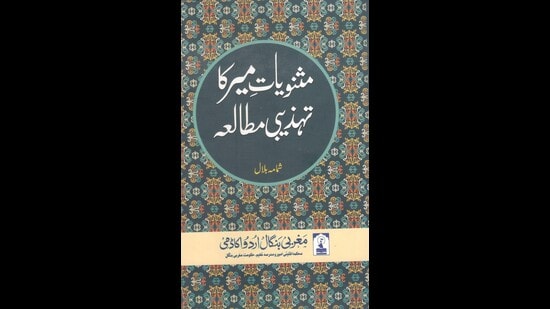
Masnaviyat e Mir Ka Tahzeebi Mutala (Urdu)(A Cultural Study of Mir’s Narrative Poems); Shamama Bilal; 244pp, ₹232; Maghribi Bengal Urdu Akademi
In addition to thousands of ghazals, Mir also wrote nearly 36 long narrative poems, eight of them containing stories about love. Being a complete 18th century man also meant that one could equally love a man or a woman, or be loved by either, as well as a young boy, who could sometimes cost grown and powerful men their fortune, and lives. Mir wrote about these affairs too. These poems are deeply informative about the mores of his times. The nature of celebrations around marriages, the observance of the festival of Holi, regarded as being the most important one through the nearly 350 years of Mughal and Nawabi rule, the practices of hunting, the hardships suffered by Delhi denizens during times of war and famine, scurrilous attacks on rival poets, and of love, often, between Hindus and Muslims, form the staple of these long poems. Shamama Bilal’s study of Mir’s mansavis, as the long poems are called, analyse his love for animals, his keen and minute observance of suffering, and his ability to empathise with the low and marginalised, while celebrating Sufism, the ephemeral nature of existence, and the absurdism of existence, human or otherwise, in an unpredictable and amoral universe. They speak to us today because, Shakespeare like, they raise questions about the rationality and coherence of life, and of the unfathomability of the order, if there is one, that governs our lives. They describe too the vagaries of fate, and of uncertain political times, which is perhaps why Mir began particularly to speak to a generation ravaged by Partition.
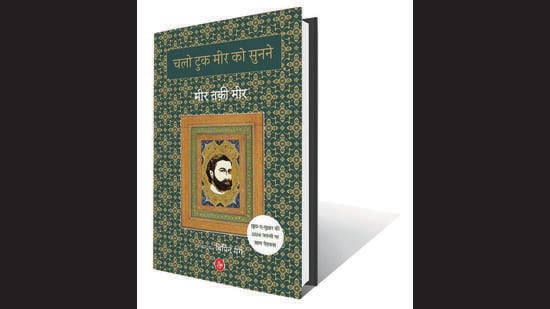
Chalo Tuk Mir Ko Sunne(Hindi) (Let Us Listen a Bit to Mir); The Complete Ghazals of Mir Taqi Mir, Vipin Garg; 688pp, ₹999; Rajkamal
Vipin Garg grew up in Meerut listening to the Ramayana and Alha Udal being recited in Urdu by his local panwallah Chacha Mahesh, outside the Ram Mandir in mohalla Dalampara, where, as a young boy, he would join the elderly residents of his neighbourhood, the majority of whom were non-Muslims, to discuss politics and share Urdu poetry. He honed his interest in Urdu poetry by reading it in Hindi, where it arguable sells more copies than in the original. That is how he discovered Ghalib and then other best sellers like Faiz, Nasir Kazmi and Parveen Shakir, before finally discovering Mir and his immense greatness. His long journey with Mir is poignantly described in his introduction to this stupendous new volume of Mir’s complete collected ghazals, which he presents for the first time in Hindi, complete with an exhaustive glossary. He has, he says, read nothing but Mir in the last seven years. He is like a Mir Google — ask him a word, phrase or verse and in an instant he will send you five different mentions of it! When we remember that the first modern annotated complete works of Mir were only published in Urdu 15 years ago, by a government-supported body, the enormity of Garg’s solitary labour can be better appreciated. When he approached Rajkamal Prakashan to publish this new collection of Mir, its owner-publisher Ashok Maheshwari informed him of the existing Diwan-e Mir in their collection, edited and compiled by the venerable revolutionary poet Ali Sardar Jafri. But when Garg informed him that Jafri’s edition contained only about 1,500 out of 15,000 of Mir’s verses, whereas his edition contained some 8000 of them, the publisher immediately agreed to take on the task. The result is nearly 700 pages of closely-packed ghazals of Mir, complete with a most thorough glossary, which says much about the saleability and viability, of publishing Urdu poetry in Hindi. The heartbreaking reality is that no private Urdu publisher can afford to take on this task in India. Garg compiled his work with the help of Abdur Rasheed, formerly professor at Jamia, who was a resident of Jama Masjid, which turned out to be a hugely significant address for decoding Mir.
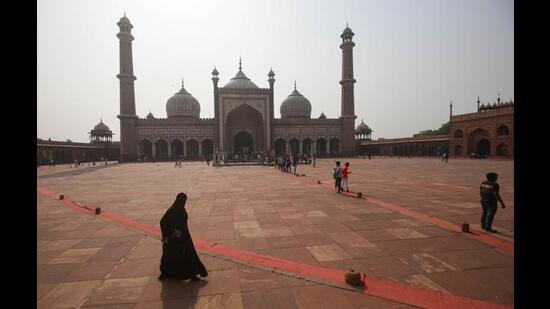
The Jama Masjid in Delhi (Amal KS/HT PHOTO)
It was while compiling the glossary that Garg learnt something striking about Mir. When Mir boasted that nobody who was not familiar with the Delhi idiom and Delhi speech could fully understand his poetry, he was not just being chauvinistic about the city. As Rasheed saheb showed him, and as previous scholars of Mir have repeatedly pointed out, Mir’s genius lay in converting a spoken tongue, a langue, into a vehicle for expressing the highest poetical ideas. In doing this, he took figures of speech, sayings, proverbs, compounds, metaphors not just from existing speech patterns of Delhi, from commonspeak, but he also manufactured them by ingenious translations from Persian compounds, some of which had already been deployed as literary idioms by Bhakti and Sufi poets of the previous three centuries. Mir emphasised the importance of rozmarrah, the everyday conversational language, and of the muhavra of Delhi as his linguistic forte. Take this couplet:
Aag si ik dil mein sulge hai kabhu bharki to MirDegi meri haddiyon ka dher jun eendhan jala
(A fire smoulders in my heart Mir and should it explodeIt shall burn down my rib cage as if a pyre is lit up)
There is no difficult word here; everything is in everyday simple language. But the verse will contain a higher intensity if you know that eendhan is not just firewood but also the wood used in the cremation pyre. Garg profitably cites an entire ghazal whose rhyme scheme ends on the common word baat, to talk. Yet, in each of the 10 verses Mir comes up with a different saying associated with the word, iebaat banana, baat pana, baat urana, baat lagana, baat sunana, baat uthana, baat barhana, all of which convey different meanings. Thus Mir not only constructed a poetic language, he rendered it eloquent and fit for use for the next 300 years. Mir appears simple because, unlike Ghalib, his diction is not overtly Persianised, but he can match the former in complexity and depth. Unlike the former, he can also employ bazarspeak, and vulgarity and the demotic and the popular. He celebrates life in all its nine rasas, in its pathos, its bathos, as well as its hilarity and frequently laughs at himself.
When we came to do our Dastangoi presentation around Mir which premiered late last year, we had to present all these ideas about Mir, apart from his poetry. We also needed to highlight all the revisionist ideas that Faruqi had developed about the rise of Urdu language and about 18th century Urdu literary culture. There was really no point in doing a dastan on Mir if we failed to do justice to the ideas of the man who was responsible for the modern revival of Dastangoi, as well as of Mir. We had to outline the close connections between Urdu poetry and Sanskrit poetics, the reasons for its latter devaluation, the feminine nature of the protagonist of the poems, the fact that the protagonist, the speaking voice of the poem, was not necessarily the poet’s persona, but an abstract, imaginary or ideal lover, the fact that love was a public phenomenon — littered with public events and marked by intrusive public figures. We had to explain, pace Faruqi, that the lachrymose self-pitying lover sometimes so exaggerated his plight that we could only laugh at and with him when the protagonist mocked himself. We needed to explain these poetic conventions, and give a glimpse of the literary culture of the time. However, we could not delve deep into the poetry, nor into the poetics, for our audiences were not familiar with Mir, and generally have a cursory understanding of poetry. Apart from the poetry, and the life of Mir, for which we have only scanty information, we also had to present the times, one of the most turbulent in our history. There was yet more. This was the period of other cultural revolutions too, of the transition from dhrupad to khyal in music by genius maestros such as Nemat Khan Adrang and Firoz Khan Sadarang, of the acme of Braj poetry celebrating Krishna bhakti with poets like Bihari, Niyaz and Gang, purveyed equally by Hindu and Muslim, Persianist and Sanskritist, the dominance of the Mughal rasik, the universality of an aesthetic of music, dance and painting in different ethnic and religious kingdoms, and of the preponderance of Hindu Persianists. And we had to do all this before an audience that is generally unaware of any of these facets of our history, and has a weak understanding of Mir’s poetry.
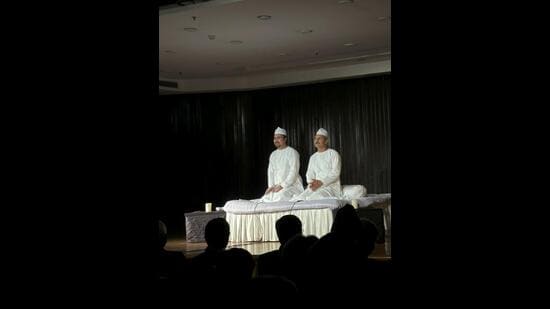
Darain Shahidi and Mahmood Farooqui performing Dastan-e Mir (Courtesy The Dastangoi Collective)
At one of the shows organised by the Anjuman, which also celebrated Mir by organising a three-day remembrance of Mir’s Shahjahanabad in Delhi earlier this month, many devoted Dastangoi audiences, including my close friends, felt left out when a substantial section of Urduwallahs, attending as special invitees, rhapsodised over each line and verse of Mir. It is difficult to dwell on the specific greatness of Mir when the audience is limited in its understanding of the general thrusts and themes of poetry. Further, Mir’s lifespan is spread over a historical period of great turmoil, of wars, conquests and loss of national sovereignty, which are all highly sensitive and complex subjects. There is a long litany of names, and there is a plethora of themes, involving questions of language, belonging and the rise of a new national consciousness and historical writings, the birth of History, so to say, catalysed by the hectoring colonial interrogation. I began the presentation by highlighting how impossible it is to describe the life and times and works of William Shakespeare in a two-hour narrative — and unfortunate as it may be, the bourgeois audiences who come to our performances are perhaps more familiar with Shakespeare than with Mir. However, even if unwittingly, they are familiar with Mir as they have heard him in films — Dikhayi diye yun ki bekhud kiya in Bazar; at the back of Delhi autos — jaan hai to jahan hai pyaare; repeat him in everyday confrontations — aankh kis ko dikhata hai; have heard him via Mehdi Hasan — Dekho to dil ke jaan se uthta hai; and have repeated proverbs, idioms and sayings that are also found in Mir. This great lover and chauvinist of Delhi had himself proclaimed:
Jaane ka nahi shor sukhan ka mere hargizTaa hashr jahan mein mera deewan rahega
The tumult of my verses will never leave this landMy works will endure until the Day of Judgment
As long as Delhi survives, Mir will live on as its greatest lover and celebrator.
Mahmood Farooqui is known for reviving Dastangoi and his latest works include Dastan-e Hindu College, Dastan-e Naina, and, with Darain Shahidi and Mashhood Farooqui, Dastan-e Mir, all produced by Anusha Rizvi for the Dastangoi Collective.
Read more news like this on HindustanTimes.com
News Related-
Anurag Kashyap unveils teaser of ‘Kastoori’
-
Shehar Lakhot: Meet The Intriguing Characters Of The Upcoming Noir Crime Drama
-
Watch: 'My name is VVS Laxman...': When Ishan Kishan gave wrong answers to right questions
-
Tennis-Sabalenka, Rybakina to open new season in Brisbane
-
Sikandar Raza Makes History For Zimbabwe With Hattrick A Day After Punjab Kings Retain Him- WATCH
-
Delayed Barapullah work yet to begin despite land transfer
-
Army called in to help in tunnel rescue operation
-
FIR against Redbird aviation school for non-cooperation, obstructing DGCA officials in probe
-
IPL 2024 Auction: Why Gujarat Titans allowed Hardik Pandya to join Mumbai Indians? GT explain
-
From puff sleeves to sustainable designs: Top 5 bridal fashion trends redefining elegance and style for brides-to-be
-
The Judge behind China's financial reckoning
-
Arshdeep Singh & Axar Patel Out, Avesh Khan & Washington Sundar IN? India's Likely Playing XI For 3rd T20I
-
Horoscope Today, November 28, 2023: Check here Astrological prediction for all zodiac signs
-
'Gurdwaras are...': US Sikh body on Indian envoy's heckling by Khalistani backers
